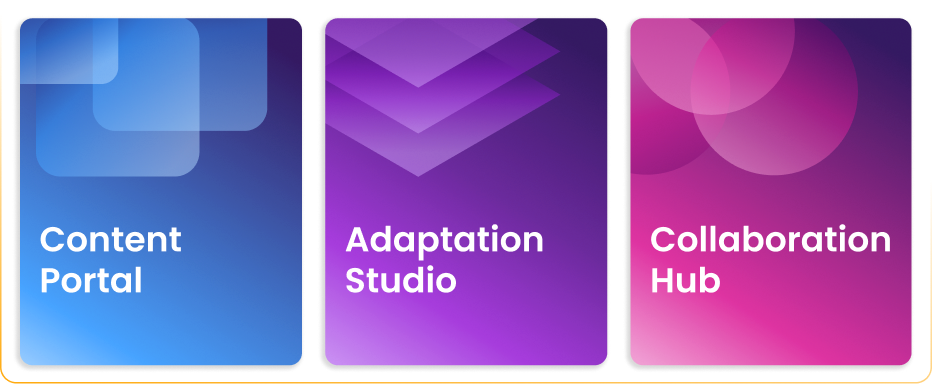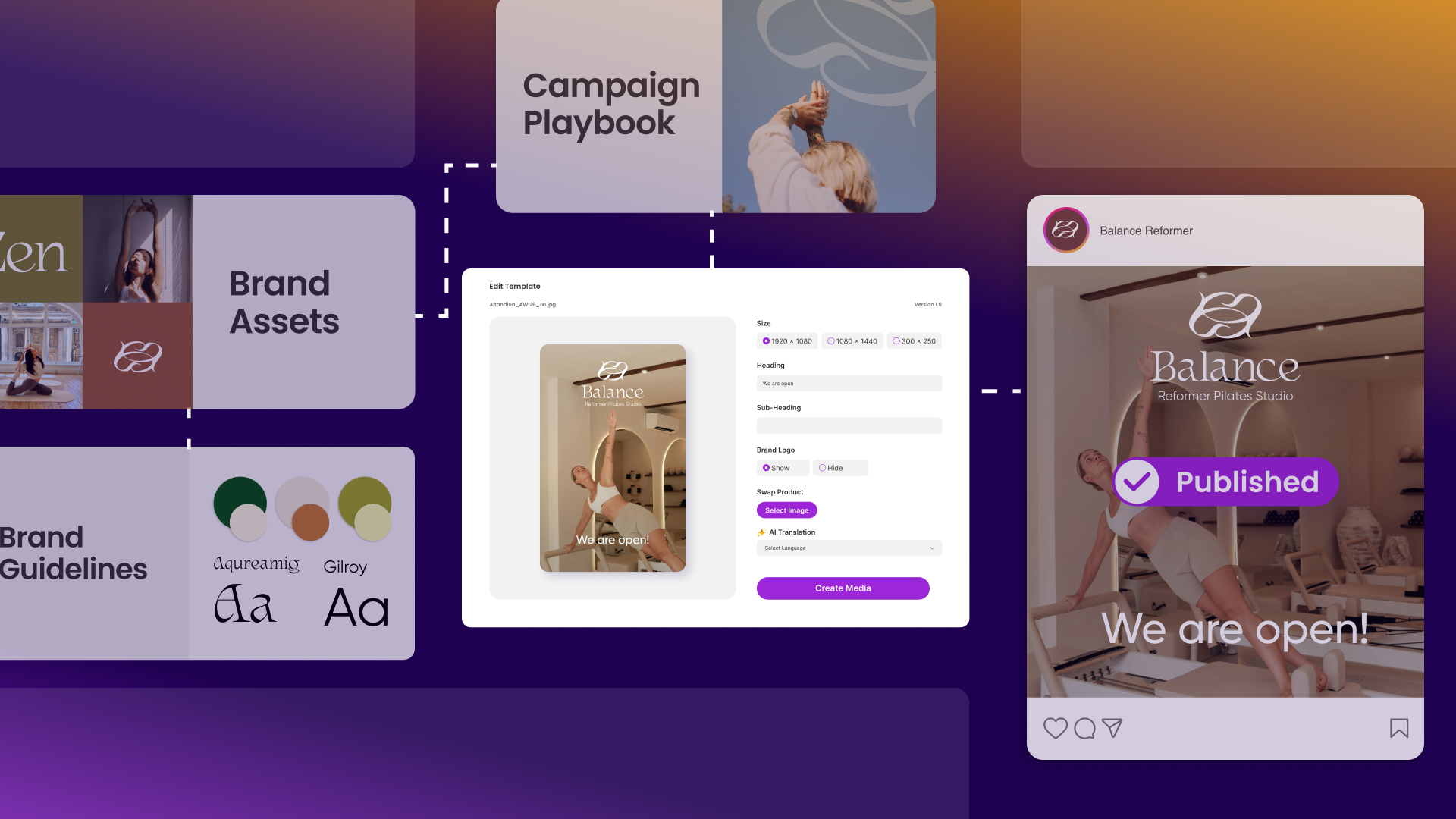What Is Content Automation? Understanding the Foundation of Modern Brand Marketing
Content automation sounds technical, but in practice it simply helps marketing teams create, manage, and deliver content across channels without the chaos and time-consuming manual work.
Instead of repeating the same edits for every asset and market, you set up smart templates and workflows that keep everything on brand while producing more content in less time.
At its core, content automation separates creative development from production work. Designers craft dynamic templates with elements you can adjust. Marketers then generate the variations they need without leaning on design for every single change.
This separation means brand consistency becomes the default rather than a daily battle.
Why Brand Consistency Matters in the Digital Landscape
Keeping your brand consistent across every channel sounds simple, but manual processes make it anything but.
Research demonstrates that consistent brand presentation can increase revenue by up to 23%. However, brand guidelines are hard to action in full. Teams often struggle to find the latest rules or apply them correctly, especially under tight deadlines.
Manual adaptations invite mistakes. Too much flexibility means layouts get tweaked, fonts swapped, and design details lost. All leading to off-brand assets.
Chaotic reviews let errors slip through. When feedback happens in scattered email threads or spreadsheets, things fall through the cracks. Inappropriate or outdated content can easily go live.
Assets live everywhere. Without a central source of truth, teams pull from old folders or past campaigns, risking outdated logos or messaging.
Last-minute changes multiply errors. When a tagline or visual update comes late in the process, manual edits across hundreds of assets almost guarantee inconsistencies.
The more markets and channels you add, the harder it gets to keep everything aligned. That’s where automation changes the game. latforms that specifically address brand consistency issues.
| Consistency Challenge | Impact on Brand Performance | Automation Solution |
|---|---|---|
| Visual inconsistency across channels | Reduced brand recognition | Template-based asset generation |
| Inconsistent messaging | Customer confusion | Centralized content libraries |
| Slow localization processes | Market-specific inconsistencies | Automated localization tools |
| Outdated brand assets in circulation | Diminished brand authority | Digital asset management integration |
How Content Automation keeps you on brand
Content automation platforms create the infrastructure needed for consistent branding through several key mechanisms. First, they provide template-based systems where brand guidelines are encoded directly into the template architecture, ensuring every asset adheres to established standards regardless of who creates it.
These systems typically integrate with digital asset management solutions to maintain a single source of truth for approved brand elements. When a logo, color palette, or typography changes, these updates can be implemented across all templates simultaneously, eliminating the risk of outdated assets remaining in circulation.
Another transformative aspect is the standardization of approval workflows. Content workflow automation ensures that all assets pass through appropriate review stages before publication, creating accountability and maintaining quality control. These structured processes significantly reduce the likelihood of off-brand content reaching your audience.
The principle is simple: automation removes human error from repetitive tasks while leaving room for creativity where it matters most.

How to get started with Content Automation
Moving from manual to automated workflows doesn’t happen overnight, but it’s easier than you think:
- Audit your current process
- Spot bottlenecks, repetitive tasks, and consistency pain points.
- Set clear goals
- Decide what matters most—speed, quality, or reducing errors.
- Choose the right platform
- Look for integrations with your design tools, asset libraries, and distribution channels.
- Build templates for high-volume formats
- Capture brand rules in the assets you create most often.
- Train your teams
- Show how automation makes life easier—not harder.
- Measure and refine
- Track improvements in time saved and consistency achieved.
Integration with existing tools is particularly crucial for seamless adoption. The ideal marketing automation platform should connect with your design software, digital asset management system, and distribution channels to create a unified ecosystem for automated content creation.
Or, you can adopt an end-to-end content marketing platform like Storyteq, which helps you effortlessly plan, manage, and create campaigns from start to finish.

The Future of Brand Consistency: AI assisted workflows
Content automation is moving beyond templates and approvals. The next wave is all about making brand consistency smarter and more intuitive.
Here’s what’s on the horizon:
- Smarter Localization: Tools like Storyteq AI Translations will adapt not just language, but tone, imagery, and cultural nuances for each market automatically.
- Assisted Briefing: Storyteq AI Briefing Coach will help teams write clearer briefs, flag missing details, and ensure brand guidelines are applied from the start.
- Smart Tagging for Asset Control: Storyteq AI Tagging will identify the best-performing assets and automatically remove expired or non-compliant ones which keep your library clean and campaign-ready.
- Brand Chatbots for Instant Guidance: Storyteq AI Chatbots will give quick answers and advice on brand guidelines like logo placement or tone of voice, so teams stay on-brand without digging through lengthy documents.
Learn more about our AI roadmap here.

Ready to transform your approach to brand consistency?
Ready to transform your approach to brand consistency? Request a demo today to see how our platform can help you maintain perfect brand consistency while scaling your content production.
